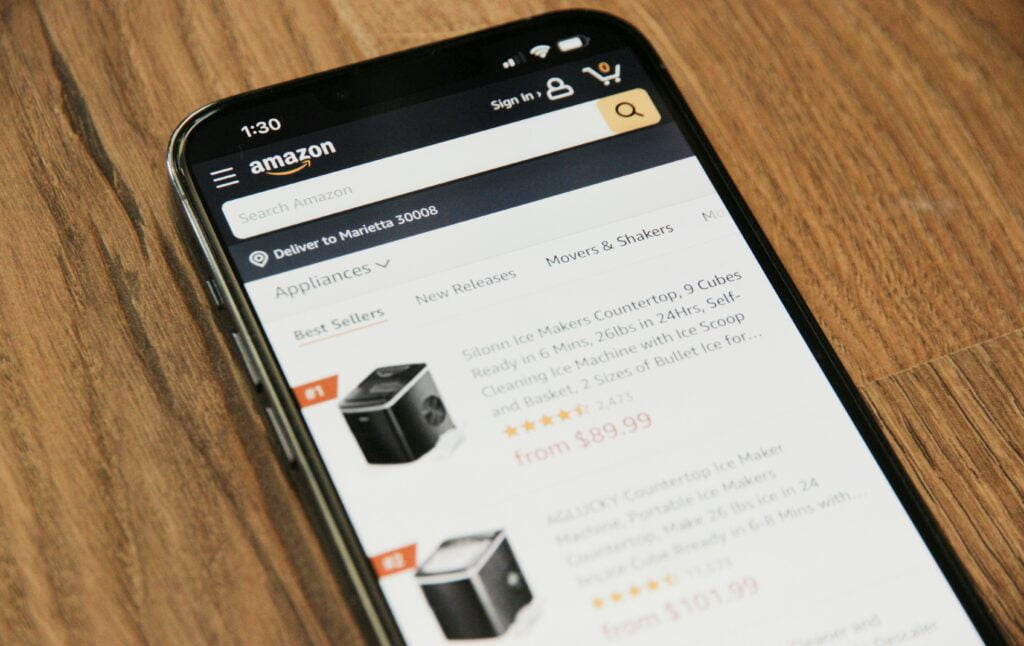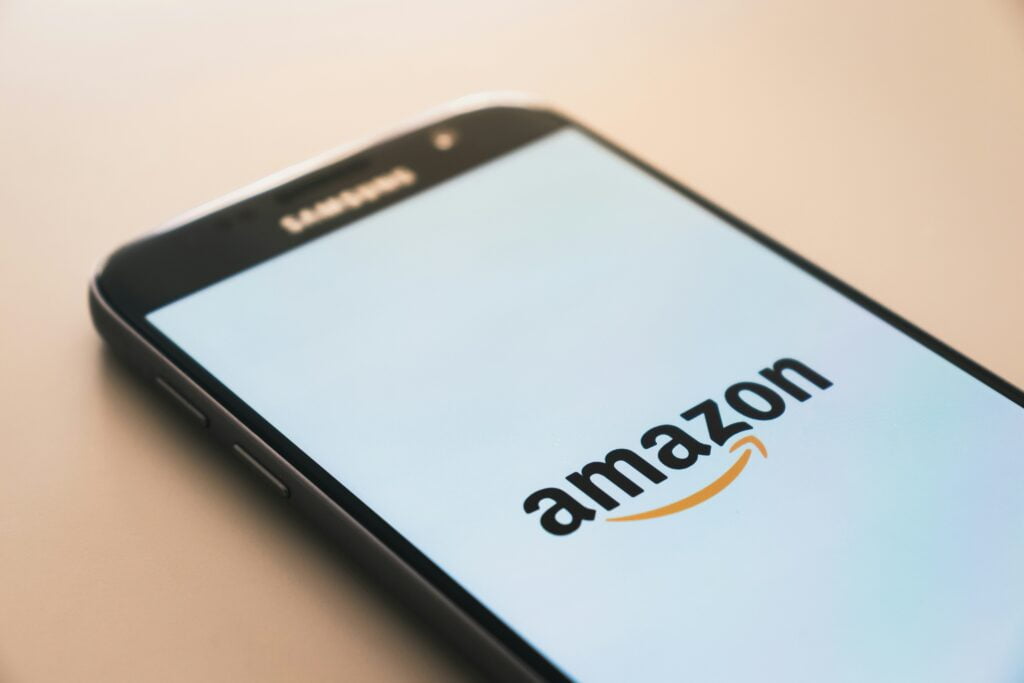This week, we zoom into an exciting update from Amazon as we witness a notable 12% growth in their U.S. sales this quarter. Such a surge in Amazon sales growth not only signals robust consumer confidence but also sets the stage for significant impacts across various sectors of the retail industry.
In our analysis, we will unravel how this growth is not merely a number but a reflection of deeper, transformative shifts within the market dynamics. Amazon’s performance is a litmus test for broader market trends, and understanding its implications helps in crafting strategies for businesses at all scales. From influencing small vendors to shifting consumer behaviors, the ripple effects are extensive and worthy of attention.
Join us as we explore what these figures mean in the grand tapestry of eCommerce, the underlying factors contributing to this increase, and the potential long-term effects on local and global markets. Whether you’re a small business owner, an eCommerce strategist, or just an avid follower of digital commerce trends, there’s plenty here to pique your interest and keep you informed.
A Glimpse into the Future of Shopping and Sustainability
As we dive deeper, we’ll also touch upon how this growth interplays with pressing concerns like sustainability and local retail challenges. The conversation around economic expansion and environmental impact continues to be more relevant than ever, providing a delicate balance for companies like Amazon to manage.
Stay tuned as we dissect these themes and more, offering you a comprehensive view of the eCommerce landscape as it evolves. It’s a critical conversation for anyone involved in digital markets, providing both insights and implications for the future of shopping.
Understanding eCommerce Evolution: Navigating Changes in Amazon and Niche Markets
As we venture deeper into the intricacies of eCommerce’s transformative landscape, understanding how key players like Ruby Lane and Amazon adapt provides invaluable insights into the broader economic environment shaping 2024’s market dynamics. Today’s discussion focuses keenly on the implications of recent policy shifts by these platforms and their consequential impacts on both vendors and consumers.

Ruby Lane’s Strategic Fee Adjustment
Starting with Ruby Lane, this niche marketplace, revered for its antique and vintage offerings, has recently adjusted its selling fees in response to escalating operational costs. This maneuver, grounded in financial necessities, is poised to ripple through their business ecosystem. Higher expenses for sellers could likely translate into marked-up prices for consumers. The essential question emerges: how will Ruby Lane maintain its competitive edge and retain the allure of its niche market in the face of these pressures?
Amazon’s Inventory Strategy Overhaul
Pivoting to the eCommerce juggernaut, Amazon has modified its low inventory fee structure. This adjustment is not just a random policy update but a strategic move reflecting deep foresight into inventory management. With warehouse space at a premium, optimizing inventory becomes crucial. This new fee structure is likely to encourage sellers to keep their stock levels judiciously balanced, aiming to reduce operational waste and potentially lower consumer prices.
These changes underscore a pivotal theme in today’s eCommerce environment: adaptability. Amazon’s immense scale allows it to wield considerable influence over its operational strategies, which in turn sets benchmarks across the industry. Ruby Lane, although smaller, illuminates the challenges faced by niche markets striving to thrive amidst a landscape dominated by giants. Both entities are navigating through a complex tapestry of operational challenges and consumer expectations, which are reflective of broader economic forces at play.
The Broader Impact and What Lies Ahead
Every adjustment in policy by notable eCommerce players like Ruby Lane and Amazon sends out waves that affect all stakeholders involved, from the small-scale sellers to the end consumers. These changes are integral to understanding not just the economic pulse of the online marketplace but also the strategic adaptations companies must undertake to sustain and grow.
As we look towards harnessing Amazon sales growth in 2024, examining these changes provides crucial lessons in agility and foresight. The evolution of eCommerce is rapid and relentless, making adaptability not just an advantage but a necessity.
For every eCommerce marketer, owner, or manager, staying informed and responsive to such changes is pivotal in crafting strategies that align with this ever-shifting landscape. As we continue to unravel the intricate layers of this digital evolution, keeping a pulse on such developments will be key to navigating future challenges and seizing new opportunities.
What do these changes mean for your eCommerce strategies? Are they mere hurdles, or do they present a playbook for adaptation and growth? Share your perspectives as we continue to explore the unfolding narrative of eCommerce together.
Unpacking Amazon’s Explosive Sales Growth in 2024
Welcome to the digital frontier of 2024, where shopping from the comfort of your home isn’t just a luxury; it’s the norm. Driven by a whopping 12% increase in U.S. sales in the first quarter, Amazon continues to redefine eCommerce dynamics. But what’s behind this impressive figure? Let’s delve into the underpinnings of this growth and speculate on its broader implications.

The Catalysts Behind Amazon’s Growth
Firstly, a 12% hike in sales for a giant like Amazon isn’t just another number—it’s a testament to shifting consumer behaviors. Purchasing online is no longer just an alternative but a preferred choice for many. This shift isn’t solely about availability or variety, but also about the enhanced confidence consumers feel towards e-shopping. Many might wonder, does this reflect a better satisfaction in services, or is it the digital convenience that sways modern-day shoppers?
Moreover, the ease of shopping online has been revolutionized with technology. In Q1 alone, billions of items were delivered within a single day across the U.S. This isn’t just a logistical achievement but a clear indicator of what the future of consumer experience looks like – instant gratification. Achieving such a feat requires a ballet of advanced algorithms, big data analytics, and a seamless logistic network—all fine-tuned to near perfection.
The Ripple Effect on Small Businesses
While consumers enjoy the fruits of Amazon’s efficiency, local retailers find themselves at a crossroads. As convenience becomes king, smaller businesses must innovate or face obsolescence. The pressure to adapt quickly or innovate novel solutions has never been more urgent. Does this competitive landscape propel forward movement, or does it overwhelm the unprepared? Examining these challenges leads us into a broader conversation on resilience and adaptability in the face of eCommerce evolution.
Sustainability: The Overlooked Casualty?
In an era where billions of packages are shipped faster than ever before, there’s an elephant in the room—environmental impact. The massive scalability and speed of deliveries, while impressive, pose serious questions about sustainability. With such a colossal carbon footprint, it’s pivotal to question how Amazon and similar entities balance efficiency with ecological concerns. Are sustainable practices taking a back seat to commercial gains, or is there a middle ground that accommodates both growth and green policies?
Concluding Thoughts: A Complex Success Story
Amazon’s success in 2024 tells a tale of innovation, consumer habits, and industry shifts, but it also opens up dialogues on market pressure, competition, and the environmental toll of instantaneous delivery. As we partake in this era of rapid eCommerce growth, it becomes increasingly critical to scrutinize and advocate for sustainable practices that do not sacrifice our planetary health for convenience.
So, every time you enjoy the click-and-receive magic of online shopping, remember the multitude of factors that play behind your screen. Each purchase is not just a transaction but an endorsement of a system—the onus is on us to demand a system that respects both our demands for convenience and the health of our environment.
Exploring the Future of eCommerce: Google’s Strategic Pivots
Welcome to a fascinating exploration into the evolving dynamics of eCommerce, spurred by technological innovations from none other than tech titan Google. As we peer into the digital horizon of 2024, significant shifts are poised to reshape how businesses engage with consumers online, particularly through avenues like targeted advertising and privacy concerns.

The Continued Role of Cookies in eCommerce
It’s official: Google has postponed the elimination of third-party cookies in Chrome until 2024, a move that highlights the ongoing debate around privacy and personalized advertising. This delay isn’t just about giving marketers more time. It signals a deeper industry anxiety over replacing cookies with less invasive yet equally effective alternatives. For businesses targeting Amazon sales growth in 2024, this means a reprieve, offering more time to utilize traditional tracking mechanisms to understand and influence consumer behavior precisely.
Introducing Performance Max for Marketplaces
Imagine spearheading your ad campaigns without a dedicated website. With Google’s innovative Performance Max for Marketplaces, this is becoming an exciting reality. This tool leverages advanced machine learning to disseminate ads across multiple platforms, effectively leveling the playing field between burgeoning sole proprietors and established big-league players. For eCommerce businesses, this tool offers a novel way to boost visibility and drive sales directly on platforms like Amazon, heralded to dominate 2024’s eCommerce strategies.
Google’s Search Engine Influence and the Rise of Alternatives
Though Google remains a behemoth in the search engine landscape, a slight dip in its market share has been noted, a vital shift highlighted in recent reports. This decline is a wakeup call to eCommerce firms reliant on Google for traffic and sales. The rise of competitors like Bing and DuckDuckGo suggests a burgeoning need for businesses to diversify their search engine optimization and advertising strategies. This isn’t just about avoiding the risk of platform dependency; it’s about tactically harnessing multiple channels to build a more resilient online presence.
The changes we see today in the digital marketing arena, steered by giants like Google, underscore a significant transition towards more inclusive, private, and user-focused eCommerce ecosystems. For entrepreneurs and marketers aiming to capitalize on Amazon sales growth in 2024, staying abreast of these developments is not just beneficial—it’s imperative. As this digital epoch unfolds, its pace quickened by innovation, those at the forefront of eCommerce evolution will likely be the first to witness and leverage the transformative shifts in consumer interaction and engagement.
In the universe of digital sales and marketing, the only constant is change. And in this whirlwind of evolution, one thing remains clear: the future of eCommerce is now, and it’s vividly manifesting through technologies that fuse commercial aspirations with consumer-centric innovations.
Exploring the Global Impact of the E.U. Accessibility Act on eCommerce
Welcome to our deep dive into how recent legislative changes—specifically the E.U. Accessibility Act—are reshaping global eCommerce landscapes. This isn’t just about policy but a transformative movement towards inclusivity that affects both consumers and businesses around the world, playing a significant role in Amazon sales growth 2024.
Picture this: you’re online, hovering over the ‘buy now’ button for that must-have tech gadget or the latest bestseller. Whether you’re shopping from the sun-soaked beaches of Miami or the bustling streets of Madrid, the E.U. Accessibility Act is bringing about significant changes that not only impact what you can buy but how you experience the buying process. This sweeping legislation ensures all individuals, irrespective of their physical abilities, enjoy equal access to products and services online.

Why Global Sellers Need to Pay Attention
It’s not just European companies that need to strap up for the ride. This Act extends beyond European borders, affecting any global entity that wants a slice of this lucrative market. Whether it’s a burgeoning startup in Silicon Valley or a traditional craft shop in the bylanes of New Delhi, adherence to these new standards is now mandatory. The ripple effects of this regulation signify a bold step towards a more inclusive global marketplace.
The significant takeaway here is not just about compliance; it’s about opportunity. Adapting to these regulations can be a game-changer for your business, potentially boosting your Amazon sales growth in 2024. By enhancing accessibility, companies are not just opening doors to a demographic previously untapped but are also polishing their brand image and expanding their market reach.
Beyond Borders: The Increasing Importance of Secure and Reliable Shipping
Switching gears, let’s tackle another issue that’s progressively concerning for both consumers and companies—postal reliability and security. The increasing instances of postal theft and the demand for better package tracking highlight a crucial need for improved logistics solutions, as noted in the discussions on USPS services reliability.

The Call to Enhance USPS Scanning and Tracking
Every package and letter whisking through the postal system isn’t just carrying items—it’s laden with expectations and trust. With the skyrocketing demand for efficient, trackable shipping to prevent losses and ensure delivery accuracy, there’s an amplified call from the public for major reforms in how USPS handles shipments. This isn’t merely about convenience but about ensuring a baseline of trust—a vital currency in today’s digital transaction era.
Engaging with and providing feedback on USPS’s current processes could lead to enhanced methods that significantly curb postal theft and improve tracking efficiency. Every feedback and report we make molds the framework of a more agile and responsive postal service, helping secure not just our parcels but also our peace of mind.
Both the enhancement of global accessibility standards and the fortification of postal services underline a broader narrative. In our swiftly transforming digital landscape, adaptability to regulations is not just about compliance—it’s a powerful thrust towards ensuring a fair, reliable, and inclusive world economy that emphatically reflects in Amazon sales growth 2024.
So, whether it’s complying with international accessibility norms or improving the efficacy of local postal services, remember—the stakes are as high as they are wide-ranging. Your interactive participation doesn’t just contribute to shaping policies but actively pioneers a world tailor-fit to the needs of its diverse populace.
Revamping eCommerce Operations: Boost Your Amazon Sales Growth in 2024
Welcome to a pivotal discussion in the realm of eCommerce—a space constantly brimming with innovation and growth. Particularly for Amazon, 2024 has emerged as a year spotlighting substantial enhancements in operational capabilities and the integration of cutting-edge technologies. These advancements are not merely optimizing business operations; they’re revolutionizing how consumers engage with their favorite online shopping platforms.

Groundbreaking Investments in eCommerce Operations
The beginning of 2024 witnessed a remarkable uptrend in investment focused on refining eCommerce logistics and analytics. Such strategic investments are crucial as they directly correlate with enhanced efficiency and inventory management. For consumers, this translates to faster delivery times and a drastic reduction in the dreaded “Out of Stock” notices, streamlining the shopping experience on massive platforms like Amazon. Accurate and agile, the new operational models powered by these investments ensure that popular products are just a click away, ready to be dispatched.
Innovative Tools Reshaping Customer Interactions
The recent unveiling of advanced eCommerce tools on April 29, 2024, signifies an evolutionary leap in customer service and personalization technologies. These tools are designed to remember user preferences, making product recommendations more accurate and tailored than ever. This level of personalization not only augments the shopping experience but fosters a deeper connection between consumers and brands. The introduction of such innovative tools is crucial in providing a competitive edge, especially for smaller businesses striving to carve out their niche against industry giants.
These enhancements across eCommerce operations are not just expanding the capabilities of online stores; they’re redefining the way consumers and businesses interact in the digital marketplace. More than ever, these tools allow businesses of all sizes to offer unparalleled service quality, which was once the domain of only the largest players.
The Consumer and Business Win-Win
As these technological and operational advancements unfold, the landscape of online shopping is morphing into a more accessible, efficient, and enjoyable environment. This evolution favors both businesses seeking robust growth and consumers desiring a seamless shopping experience, illustrating a clear win-win scenario in the bustling digital marketplace.
As we continue to witness the seamless integration of these advancements in 2024, it becomes evident that operations enhancements are a cornerstone of not only sustaining but also scaling Amazon sales growth. For businesses, staying abreast of these trends isn’t optional—it’s essential to remaining competitive and relevant in the fast-evolving eCommerce arena.
In conclusion, whether you’re an eCommerce marketer, manager, or owner, embracing these operational enhancements is pivotal. They are not just improving efficiencies; they are transforming the very essence of customer interactions, setting the stage for a dynamic future in online shopping.
Keep an eye on these transformative changes, adapt swiftly, and you might find your business scaling new heights in Amazon’s ever-competitive ecosystem. Happy selling!
Wrapping Up and Looking Forward
As we conclude our deep dive into this week’s whirlwind of eCommerce developments, it’s clear that the landscape of online shopping continues to evolve at an unprecedented pace. The rise of Amazon, in particular, sets a compelling narrative for what we might expect going into 2024. Their growth trajectory not only influences market dynamics but also sets a benchmark for innovation and customer expectations in the eCommerce sector.
From the discussion of the EU Accessibility Act to technological advancements that streamline shopping experiences, it’s evident that staying informed is more crucial than ever. These changes not only impact how businesses operate but also how they strategize to meet evolving consumer demands.
Engage with Us
- How do you see these trends impacting your business strategies in 2024?
- What measures are you taking to adapt to the fast-paced changes dictated by major players like Amazon?
- Do you believe the advancements in eCommerce technologies will more significantly benefit consumers or businesses?
Your insights and experiences are invaluable, and we encourage you to share them. Engaging in this conversation could provide you with new perspectives or validate the path you’re currently on. As we all navigate these changes, sharing knowledge and experiences can only serve to enhance our strategies and outcomes.
Stay Tuned and Empowered
Remember, knowledge is power, especially in a rapidly shifting market such as eCommerce. Keep tuning into our discussions, and visit blikket.co for ongoing updates and expert advice to help you stay ahead. Looking forward to exploring more on Amazon sales growth in 2024 and other pressing eCommerce topics in our future sessions.
Until next time, keep pushing boundaries and reshaping the way the world shops. See you in the next update!










